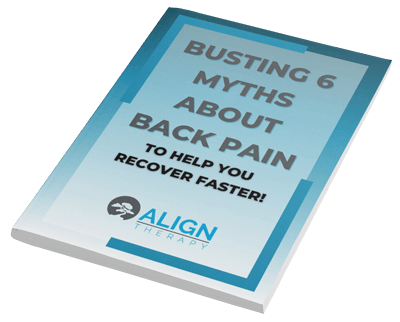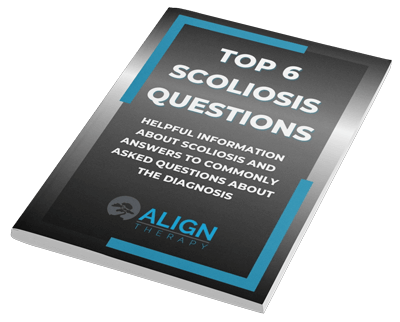Scoliosis: The Hidden Pains
Scoliosis, often considered a condition primarily affecting adolescents, can also impact adults in ways that may not be immediately noticeable. While some people experience a visible curvature of the spine, others may find themselves dealing with pain, stiffness, or a reduced range of motion without knowing that scoliosis is to blame. This hidden pain can go unnoticed for years, as its effects manifest gradually and often seem like the natural aging process.
But scoliosis doesn’t have to limit your quality of life. Understanding the hidden pains associated with scoliosis and how to manage them effectively is crucial to improving mobility and overall comfort. This blog explores the various types of hidden pains linked to scoliosis and offers actionable solutions to reduce discomfort.
What Is Scoliosis?
Scoliosis is a condition in which the spine develops an abnormal curvature. Instead of forming a straight line, the spine may curve to the left or right, forming a “C” or “S” shape. While it’s more commonly diagnosed during childhood or adolescence, scoliosis can persist into adulthood or even develop later in life. In many cases, the condition progresses slowly, and symptoms may worsen with age.
There are two main types of scoliosis:
- Idiopathic Scoliosis: This is the most common type and has no known cause. It typically develops during childhood or adolescence and may worsen over time if not managed properly.
- Degenerative Scoliosis: This type of scoliosis develops as a result of the natural aging process, where wear and tear on the spine’s joints and discs cause the spine to curve. Degenerative scoliosis typically occurs in adults over the age of 50.
Regardless of the type, scoliosis can lead to a variety of symptoms that affect your daily life, including hidden pain.
Understanding Hidden Pains of Scoliosis
While some individuals with scoliosis have visible spinal curvatures, many others may not notice any outward signs. However, hidden pains can arise over time, often leading to stiffness, discomfort, or even chronic aches. These pains can be particularly difficult to diagnose because they may be attributed to other conditions like muscle strain, poor posture, or natural aging.
Here are some common hidden pains associated with scoliosis:
1. Muscle Imbalance and Stiffness
When the spine curves, it can lead to muscle imbalances. One side of the body may be more stretched out than the other, causing certain muscles to tighten while others weaken. This can result in stiffness and discomfort, particularly in the back, hips, and shoulders. The asymmetry in muscle function can make it harder to maintain good posture, leading to a constant sense of tightness.
Muscle imbalances can also cause further complications. When certain muscles are overworked and others are underutilized, this can lead to muscle fatigue, strain, and even headaches.
2. Back Pain and Discomfort
Back pain is one of the most common symptoms of scoliosis, particularly in adults with degenerative scoliosis. The abnormal curvature of the spine places additional stress on the muscles, joints, and ligaments in the back, which can lead to chronic pain or flare-ups. As the condition progresses, the wear and tear on the spine can also lead to issues with the discs, contributing to pain and discomfort.
The back pain caused by scoliosis may not always be obvious. It can come and go, or it might worsen over time as the curve in the spine increases. Even subtle pain in the lower back or upper back may be linked to scoliosis, even if the curvature is not immediately noticeable.
3. Nerve Compression
As the spine curves, it can put pressure on the nerves, particularly the spinal cord and the nerves that extend to the rest of the body. This pressure can result in nerve compression, leading to symptoms such as tingling, numbness, or weakness in the legs, arms, or feet. In some cases, the nerve compression can even cause radiating pain down the limbs, particularly if the nerves in the lower back are affected.
Nerve compression can be a major contributor to hidden pain. While nerve-related discomfort may not always present itself immediately, it can worsen over time as the condition progresses.
4. Limited Mobility and Flexibility
Another hidden pain of scoliosis is the loss of flexibility and mobility. Because scoliosis affects the spine’s natural alignment, it can limit your ability to bend, twist, and move freely. This restriction in mobility can make everyday activities like bending down, lifting, or even sitting for long periods more challenging.
Adults with scoliosis may also find it difficult to engage in physical activities they once enjoyed, such as hiking, dancing, or sports. The limitation in movement is often not accompanied by overt pain but can contribute to discomfort and a decrease in overall quality of life.
5. Joint Pain and Degeneration
Over time, scoliosis can cause excessive wear on the joints of the spine, particularly the facet joints. These joints are responsible for allowing movement between vertebrae, but when the spine is misaligned, they may wear unevenly. This can result in arthritis, joint pain, and inflammation, which further limit mobility and cause discomfort.
For those with degenerative scoliosis, joint pain may develop gradually, and individuals may not realize it’s related to scoliosis. Joint stiffness and inflammation can make it difficult to move freely and may lead to a continuous cycle of discomfort.
Managing Hidden Pains from Scoliosis
While scoliosis can cause significant pain and discomfort, there are various ways to manage these hidden pains and improve overall comfort. The following strategies can help individuals with scoliosis improve their mobility, posture, and quality of life.
1. Physical Therapy and Movement-Based Therapy
One of the most effective treatments for managing scoliosis-related pain is physical therapy. A physical therapist can help design a personalized plan that includes exercises to strengthen the core, improve flexibility, and relieve muscle tension. This type of therapy is especially important for managing scoliosis because it addresses the underlying muscle imbalances that contribute to discomfort.
Movement-based therapies such as the Schroth Method are also highly effective for scoliosis patients. These therapies focus on specific exercises that help improve posture and align the spine, providing relief from discomfort while also preventing further progression of the condition.
2. Core Strengthening
Strengthening the muscles that support the spine, particularly the core muscles, can greatly reduce the hidden pain associated with scoliosis. A strong core helps improve posture and prevent further strain on the spine. Simple exercises like pelvic tilts, planks, and bridges can help build core strength, leading to better support for the spine.
3. Stretching and Flexibility Exercises
Scoliosis often causes stiffness in certain areas of the body, particularly the back and hips. Regular stretching can help reduce this stiffness and improve flexibility, making it easier to move without discomfort. Stretching exercises, such as gentle twists and stretches for the hamstrings, quadriceps, and lower back, can help alleviate tightness and improve range of motion.
4. Posture Correction
Maintaining proper posture is essential for managing scoliosis-related pain. Poor posture can exacerbate the curvature of the spine and increase muscle tension. A physical therapist can teach you how to sit, stand, and move in ways that support your spine’s natural alignment. Simple adjustments in daily habits, such as using ergonomic furniture or practicing posture exercises, can make a significant difference in reducing discomfort.
5. Lifestyle Adjustments
Small lifestyle changes can help improve the overall well-being of those living with scoliosis. Regular walking, low-impact exercises like swimming, and even maintaining a healthy weight can reduce the strain on your spine. Additionally, using heat or cold packs can help manage inflammation and muscle spasms.
Conclusion
Scoliosis is a complex condition that can lead to a variety of hidden pains, affecting daily life in ways that aren’t always obvious. However, by understanding the nature of these hidden pains and taking a proactive approach to managing them, you can improve your quality of life and continue to lead an active, comfortable lifestyle. Movement-based therapy, strengthening the core, and maintaining proper posture are just a few of the many ways you can reduce discomfort and regain control over your body. If you’re struggling with scoliosis, consider exploring these solutions and taking steps toward a healthier, pain-free life.



